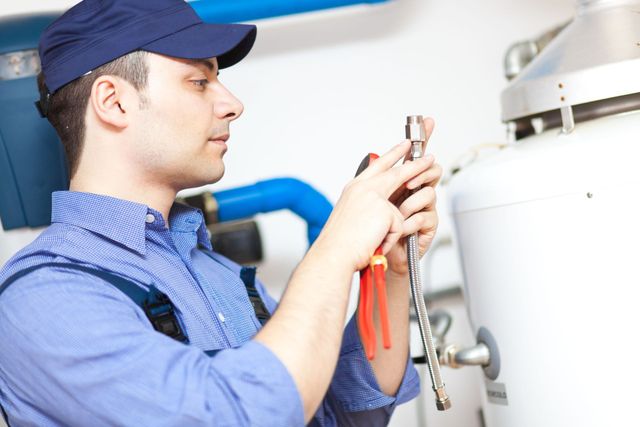Steps on How to Maintain Your Home's Hot Water System ProperlySteps to Prolong the Life of Your Home's Hot Water System Through Maintenance
Steps on How to Maintain Your Home's Hot Water System ProperlySteps to Prolong the Life of Your Home's Hot Water System Through Maintenance
Blog Article
Listed here further down you can find additional really good data in regards to What Kind of Maintenance Do Water Heaters Need?.

Warm water is vital for everyday comfort, whether it's for a rejuvenating shower or washing dishes. To ensure your warm water system runs successfully and lasts much longer, normal maintenance is key. This post provides useful suggestions and understandings on just how to preserve your home's hot water system to avoid disruptions and pricey repair work.
Introduction
Keeping your home's warm water system may appear complicated, but with a couple of simple steps, you can ensure it runs efficiently for several years to come. This overview covers everything from understanding your hot water system to DIY maintenance tips and knowing when to contact expert aid.
Relevance of Preserving Your Warm Water System
Normal upkeep not only extends the lifespan of your hot water system but likewise ensures it operates efficiently. Overlooking maintenance can lead to decreased performance, greater power expenses, and even premature failing of the system.
Indicators Your Warm Water System Requirements Maintenance
Understanding when your warm water system requires interest can prevent significant concerns. Keep an eye out for indicators such as irregular water temperature, unusual noises from the heater, or rusty water.
Purging the Hot Water Heater
Purging your hot water heater removes sediment buildup, improving performance and lengthening its life.
Checking and Replacing Anode Rods
Anode rods avoid corrosion inside the tank. Evaluating and changing them when worn is important.
Complicated Issues Calling For Expert Assistance
Examples include significant leaks, electrical troubles, or if your hot water heater is constantly underperforming.
Routine Specialist Upkeep Advantages
Professional upkeep can consist of complete evaluations, tune-ups, and guaranteeing conformity with safety and security standards.
Inspecting and Changing Temperature Setups
Adjusting the temperature setups guarantees optimal efficiency and security.
DIY Tips for Upkeep
You can do several upkeep tasks on your own to keep your warm water system in top problem.
Checking for Leakages
On a regular basis inspect pipelines and connections for leakages, as these can cause water damage and higher costs.
Understanding Your Hot Water System
Before diving right into upkeep tasks, it's valuable to recognize the basic components of your hot water system. Normally, this includes the hot water heater itself, pipes, anode poles, and temperature controls.
Month-to-month Maintenance Tasks
Routine monthly checks can assist capture small issues prior to they intensify.
Checking Stress Alleviation Valves
Evaluating the pressure relief valve ensures it functions properly and avoids excessive stress buildup.
Insulating Pipes
Insulating warm water pipelines reduces warm loss and can conserve power.
When to Call a Professional
While DIY maintenance is useful, some concerns call for professional knowledge.
Final thought
Routine maintenance of your home's warm water system is vital for performance, durability, and price financial savings. By following these pointers and knowing when to seek professional help, you can guarantee a reputable supply of hot water without unforeseen disturbances.
How to Maintain an Instant Hot Water Heater
Before tinkering with your hot water heater, make sure that it’s not powered on. You also have to turn off the main circuit breaker and shut off the main gas line to prevent accidents. Also turn off the water valves connected to your unit to prevent water from flowing into and out of the appliance. 2. When you’re done, you have to detach the purge valves’ caps. These look like the letter “T” and are situated on either side of the water valves. Doing so will release any pressure that has accumulated inside the valves while at the same time avoid hot water from shooting out and burning your skin. 3. When the purge valves’ caps are removed, you have to connect your hosing lines to the valves. Your unit should have come with three hoses but if it didn’t, you can purchase these things from any hardware or home repair shops. You can also get them from retail stores that sell water heating systems. Read the user’s manual and follow it to complete this task properly. When the hosing lines are connected, open the purge port’s valves. 4. You should never use harsh chemical cleaners or solutions when cleaning your unit. Make use of white vinegar instead. It should be undiluted and you’ll probably use about 2 gallons. 5. Now flush your water heater. This task should probably take about 40 minutes. We can’t give you specific directions for this because the procedure is carried out depending on the type, model and brand of your heater. With that being said, refer to the user’s manual. 6. When you’re done draining the unit, you have to turn off the purge port valves again. Remove the hosing lines that you earlier installed on each of the water valves. Put the valve caps (purge port) back in their respective places and be very careful so as not to damage the rubber discs that are found inside these caps. 7. Now that everything’s back in place, check your user’s manual again to find out how to reactivate your water heating system. 8. Once it is working, turn one of your hot water faucets on just to let air pass through the heater’s water supply pipes. Leave the tap on until water flows smoothly out of it. https://www.orrplumbing.com/blog/2014/september/how-to-maintain-an-instant-hot-water-heater/

We had been shown that article about How to Maintain Your Water Heater & Prolong its Life through a buddy on another site. Appreciated our piece? Please share it. Help others check it out. I am grateful for being here. Please check our blog back soon.
Estimate Free Report this page